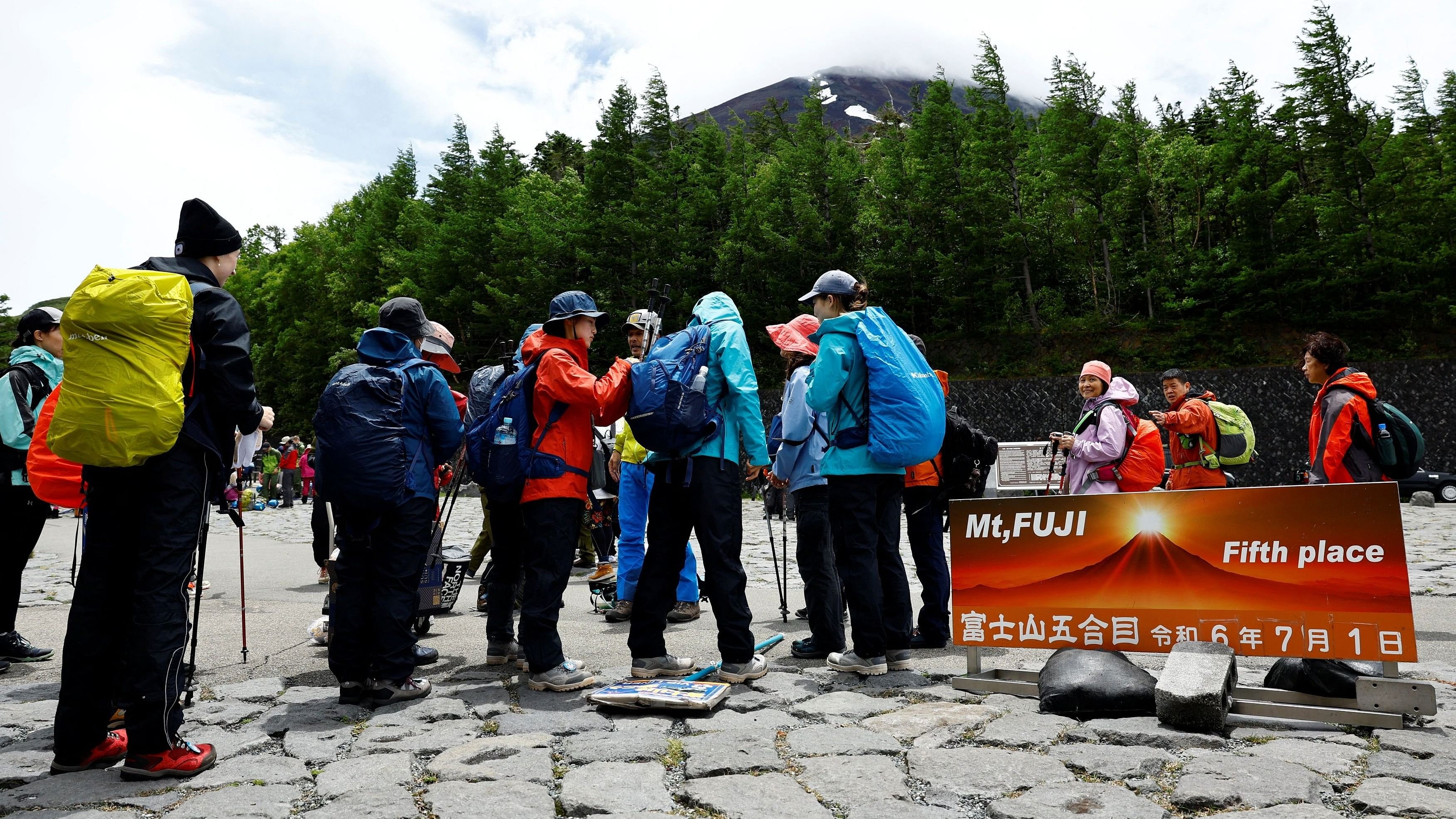
Climbers gather at Fuji Yoshidaguchi Trail on the slopes of Mount Fuji, in Fujiyoshida, Yamanashi Prefecture, Japan on July 1, 2024.
Credit: Reuters Photo
Fujiyoshida, Japan: Park rangers on Japan's sacred Mount Fuji officially started this year's climbing season about 90 minutes before sunrise on Monday, levying new trail fees and limiting hiker numbers to curb overcrowding.
At 3 am, officials opened a newly installed gate at a station placed just over halfway up the 3,776 m (12,388-ft) peak that is a symbol of Japan and a magnet for tourists, now swarming into the country at a record pace.
Climbers must pay 2,000 yen ($12) and their numbers will be limited to 4,000 a day after complaints of litter, pollution, and dangerously crowded trails flowed in last year.
"I think Mount Fuji will be very happy if everyone is more conscious about the environment and things like taking rubbish home with them," said Sachiko Kan, 61, who was one of about 1,200 hikers gathered on the first day of the new measures.
The yen's slide to a 38-year low has made Japan an irresistible bargain for overseas visitors.
They are injecting record sums into national coffers but are also putting strains on facilities for travel and hospitality, not to mention the patience of locals.
Hordes of tourists became a traffic hazard at a nearby photography spot where Mount Fuji appeared to float over a convenience store, driving officials to put up a barrier of black mesh to obstruct the view that had gone viral online.
The climbing season this year on Mount Fuji, which straddles the prefectures of Yamanashi and Shizuoka about 136 km (85 miles) from Tokyo, runs until September 10, after which the weather gets too cold and snowy.
A still active stratovolcano whose last eruption was in 1707, Mount Fuji has been a site of Shinto and Buddhist worship for centuries.
The number of climbers recovered to pre-pandemic levels last year, with about 3,00,000 annually, the environment ministry says. Hikers typically start in the wee hours to make it to the top in time for sunrise.
For their money, climbers receive a wristband giving access to the trail between 3 am and 4 pm, excluding those with reservations for mountain huts closer to the peak, to whom the daily limit on visitors will not apply, authorities say.
The new trail curbs were necessary to prevent accidents and incidents of altitude sickness, particularly among foreign "bullet climbers", or those racing to the top, Yamanashi governor Kotaro Nagasaki said last month.
Japan should focus on attracting "higher spending visitors" over sheer numbers of people, he told a press conference.
Geoffrey Kula, one overseas climber waiting to scale Mount Fuji on opening day, took the restrictions in stride.
"This is not Disneyland," said Kula, a visitor from Boston. "Having some sort of access control system to limit the amount of potential chaos is good."